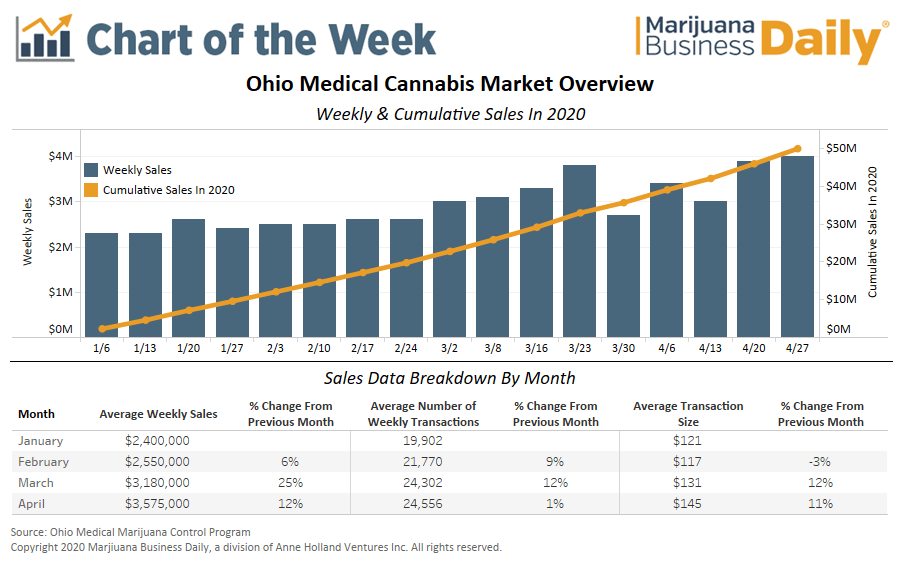Sales in Ohio’s nascent medical marijuana industry steadily improved during the first four months of 2020, despite short-term hiccups caused by the coronavirus pandemic.
Through the end of April, roughly $50 million of medical marijuana was sold in Ohio in 2020 – just shy of the $58 million sold for the entirety of 2019.
That’s an increase of 227% from the 31,100 who were registered in Ohio at this time last year. Patient counts are growing by an average of 7% month-over-month so far in 2020.
While weekly sales had grown alongside patient counts, sales took a hit just as the coronavirus pandemic began to sweep across the United States.
Medical marijuana sales in Ohio for the week of March 30 fell 29% from the previous week, followed by two more weeks of up-and-down sales.
Measures taken by Ohio’s Medical Marijuana Control Program to allow patients easier access to MMJ while Ohio’s stay-at-home order was in place appear to have worked, leveling out sales.
In late April, the program implemented temporary rules to allow online ordering and curbside pickup and ease restrictions around the amount of product patients could possess during a 90-day window.
The temporary rules encouraged fewer trips to Ohio’s dispensaries.
Average weekly sales were up 12% from March to April, driven by an 11% jump in transaction size and a 1% increase in the average number of weekly transactions.
In short, patients made fewer trips to dispensaries but purchased more medical marijuana products each time they visited.
Eli McVey can be reached at elim@mjbizdaily.com
Join the “Survive to Thrive” executive strategy session at MJBizConNEXT Direct for additional guidance on adjusting staffing, structure and more in the wake of COVID-19.







